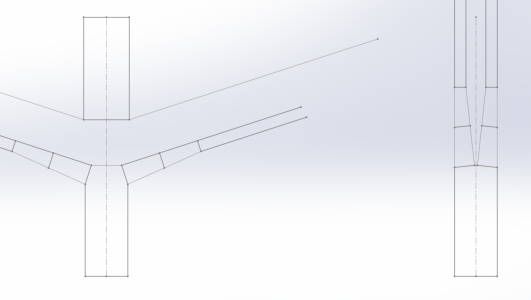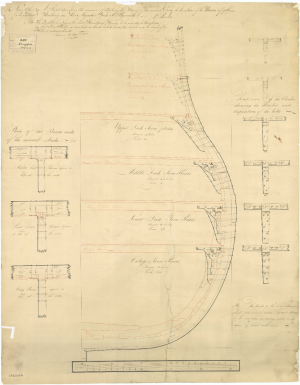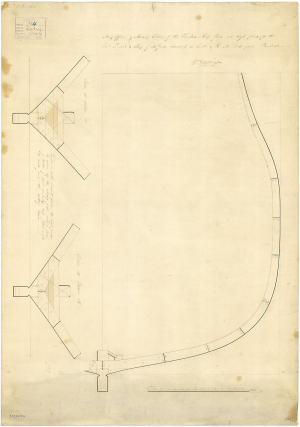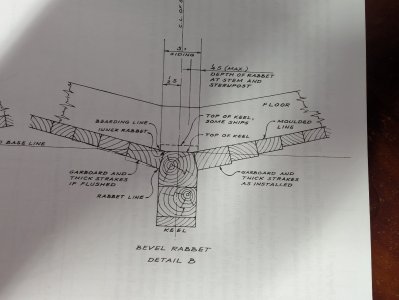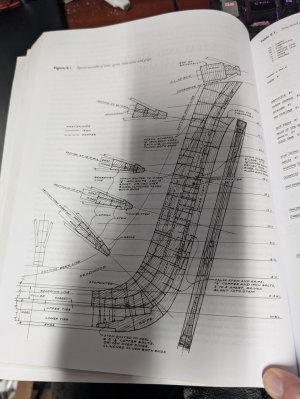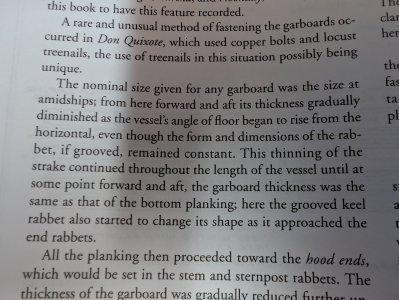- Joined
- Jan 25, 2023
- Messages
- 535
- Points
- 308

I am trying to figure out how the garboard interacts with the keel and deadwood, in this case of a Philadelphia Clipper from the 1850's. On the left you see a rough approximation of the cross section of the keel at midships. It shows how the rabbet should be cut into the keel and the garboard and second strake. The garboard is 7 inches thick and 14 inches wide, the second strake is slightly thinner and transitions down to 4 inches thick, the thickness of the follow on strakes. The keel is 15 inches thick and the keel timbers or keelson is 16" thick. On the right is my rough understanding of how the cross section would look at the bow. The outside surface of the garboard and second strake have turned vertical to match the outside face of the keel. If the garboard remains 7 inches thick it would only leave 1 inch of deadwood between the port and starboard garboards. Is this correct or should the garboard thin down to 4 inches at the stem and stern? Or is the solution eluding me altogether?
